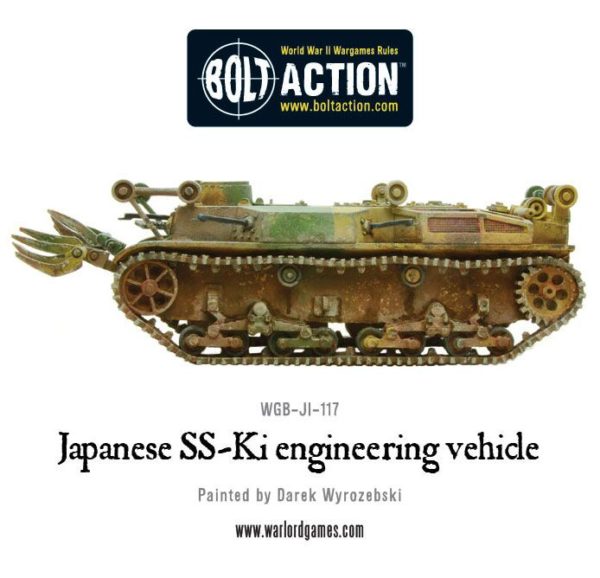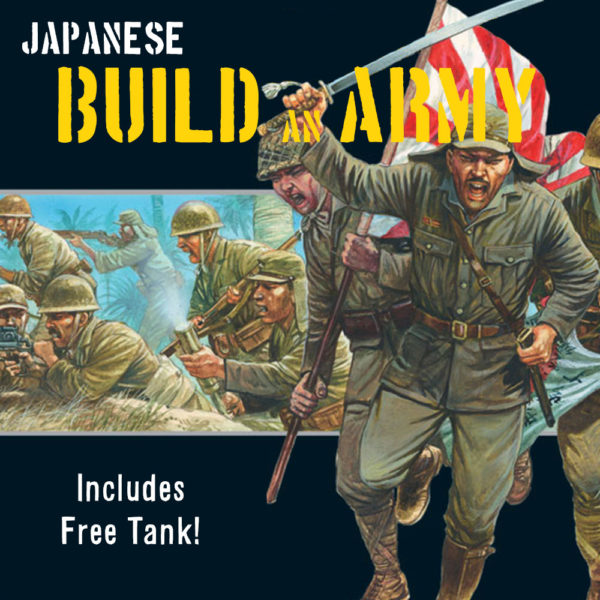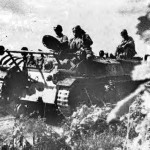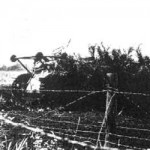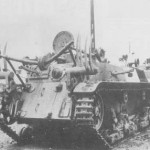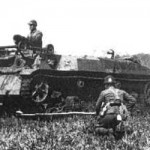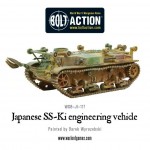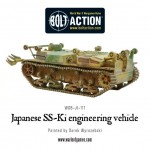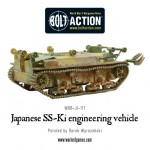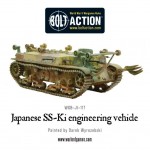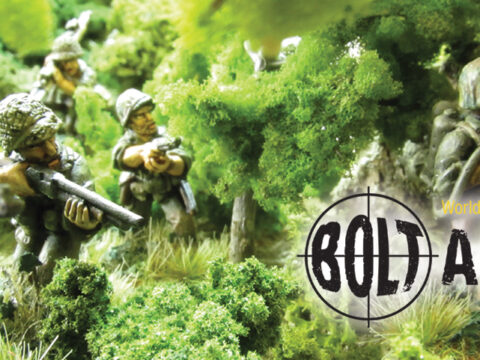The SS-Ki, officially the Soko Sagyo, a fully tracked – flamethrower armed – engineering vehicle of the Imperial Japanese Army (IJA).
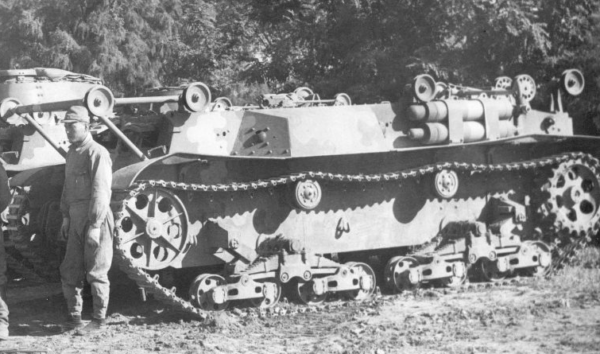
History
By the 1930s the IJA had grasped the need for a dedicated engineering tank. In preparation for war against the Soviet Union they set about designing a vehicle which could destroy bunkers, clear minefields, dig trenches, remove barbed wire entanglements, deliver or decontaminate chemical weapons, lay smoke screens or act as a mobile crane. Bridging trenches and anti-tank ditches was also added to this lengthy list after the first prototype was built in 1931.
The SS-KI was first used at Beijing in 1937 and throughout the war in several variants, the IJA concidered it to be one of its most versatile multi-function support vehicles.
The SS-KI had a hull based on the Type 94 with modifications to the driver’s hatch and the addition of flamethrowers. The turret was removed and replaced with a small commander copula with fitted observational devices; two claws used for mine clearing were placed in the front, while a winch designed to pull heavy objects was placed in the rear
The first four built were assigned to the 1st Mixed Tank Brigade and sent to China. During the Battle of Beiping–Tianjin, they were employed as flamethrower tanks. More than 100 SS-KI were built, with the majority being the later Bo type.
From late 1941 around 20 SS-Ki were sent to the Philippines as part of the 2nd Tank Regiment, and remained there until the end of the war. Eight vehicles were captured by the USMC during the summer of 1945, which classified the vehicles as flamethrower tanks.
The SS-Ki had a maximum armor thickness of 25mm and its standard armament consisted of 2-3 flamethrowers (upgraded to five on the Bo!) mounted on the hull, each pointing in a different direction.
- SS Ki: Main variant
- SS Kou Gata – Armored engineering vehicle with suspension tracks consisting of four return rollers
- SS Otsu Gata – Armored bridgelaying vehicle with three return rollers and modified drive sprockets
- SS Hei Gata – Armored trench digger with identical suspension as the Otsu Gata, with additional armor plates
- SS Tei Gata – Armored engineering vehicle with identical suspension as the Otsu Gata
- SS Bo Gata – Armored bridgelaying vehicle based on the design of the SS Ki
It was perhaps most effective at the last ability, bridgelaying, and two versions of the SS-Ki were specialized for it, giving you the perfect excuse to experiment with conversions of your own!
In Bolt Action
Taken as a Tank choice in your army lists this little beast is fantastic at covering a flank advance – Try and pick on a weak area in your enemies defences and advance with plenty of infantry in support. Use its close range flamethrowers to pin the target before the infantry mop up what remains.
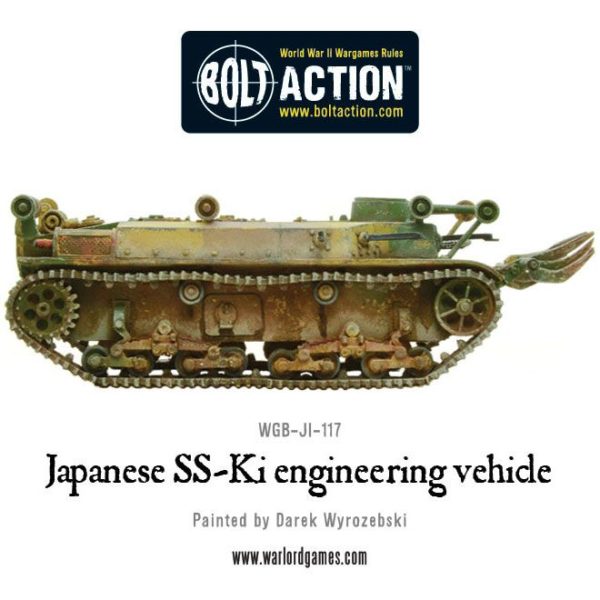 .
.
| Cost: | 88pts (Inexperienced), 110pts (Regular), 132pts (Veteran) |
| Weapons: | 1 mounted front-facing MMG, 1 small flamethrower firing to the front, left or right arcs. |
| Damage Value: | 7+ (tankette) |
| Options: | – Upgrade to Bo type for +5pts. This allows the flamethrower to fire into the rear arc of the tank. |
| Special Rules: | – Multiple flamethrowers: The SS-KI actually had three flamethrowers (five on the Bo!) mounted on the hull, each pointing in a different direction. In an effort to limit the madness this would cause in Bolt Action if they could all fire at once, we assume that the SS-KI can only use one flamethrower per turn. |
| Small vehicle flamethrower: | – The SS-KI’s flamethrowers are somewhat less powerful than those mounted on larger vehicles, so the range of the weapon is limited to 12” and the number of shots is always reduced by one (2D6-1). |
| – Flammable: Flamethrowing vehicles are more likely to be destroyed by damage, as explained on page 51 of the Bolt Action rulebook. | |
| – Mine rake: The SS-KI will clear minefields on a roll of 4 or more despite only having a damage value of 7+. | |
| – Bridging: Whenever you give a Down order to this unit, you may mark it as having its ramps extended. While ramps are extended the vehicle cannot move, but other vehicles may drive over it and 3” in front and behind it, treating the area as open ground, though vehicles may not use run orders to cross. You must give the vehicle a further Down order to fold the ramps back up before you can move the vehicle again. |
